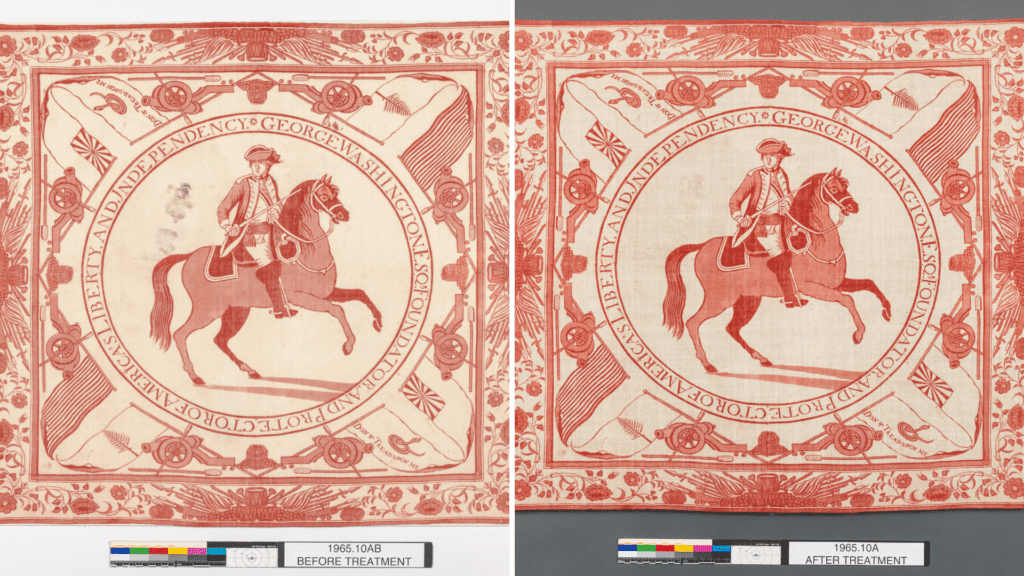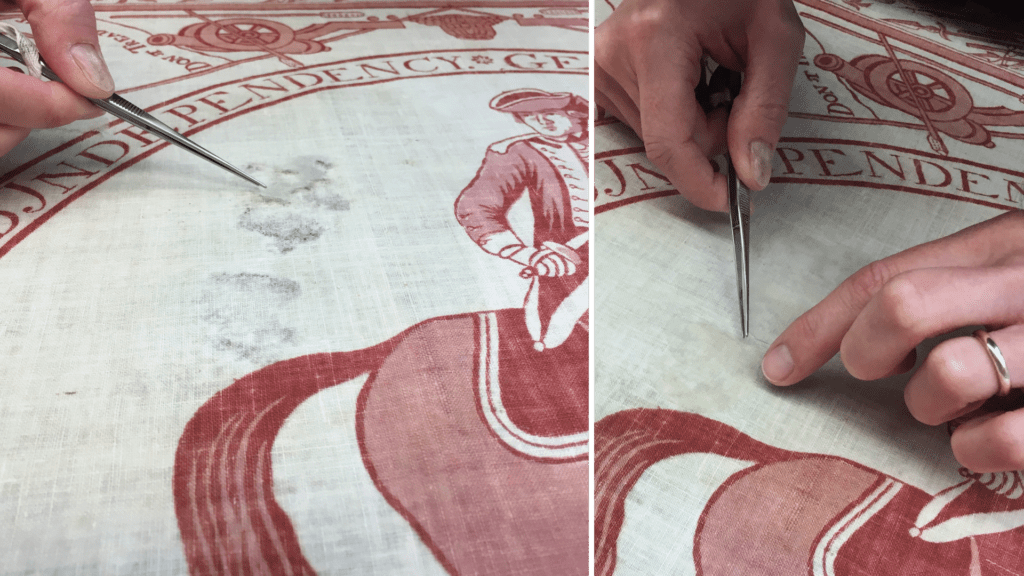
This rare, red-on-white printed handkerchief from the late 18th century shows General George Washington on horseback—and a large gray stain we wanted to reduce before it was exhibited in Hamilton & Burr: Who Wrote Their Stories? in 2019.
Past attempts to reduce the discoloration were minimally successful, so an unsightly muslin patch had been stitched over it. To improve its appearance, conservators need an exacting treatment to match the exacting block printing on both sides of the handkerchief.
Conservators first applied a series of poultices of cleaning solutions, chelators, and enzymes to the stain. The poultices reduced the gray coloration only minimally, so masking the stain remained the best treatment option.

Conservators created the mask by tinting a sheer Japanese tissue and super-fine silk crepeline with fabric paints and dyes to match the color of the handkerchief. They shaped the tissue with a small, damp brush, then pulled the wet tissue apart to feather the edges. The shaped tissue was fixed over the darkest areas with a water-soluble paste of methyl cellulose and wheat starch, then a patch of crepeline was pasted over the entire stain.
The treatment successfully reduced the appearance of the discoloration while allowing the weave of the fabric to show through. A layer of gray fabric between the handkerchief and its support mount further reduces the appearance of staining. The water-based paste can be reactivated, which makes the treatment reversible.
After its display in Hamilton & Burr, the handkerchief—inconclusively attributed to textile printer John Hewson, of Philadelphia—was returned to its original location in the house in Bertrand Hall.